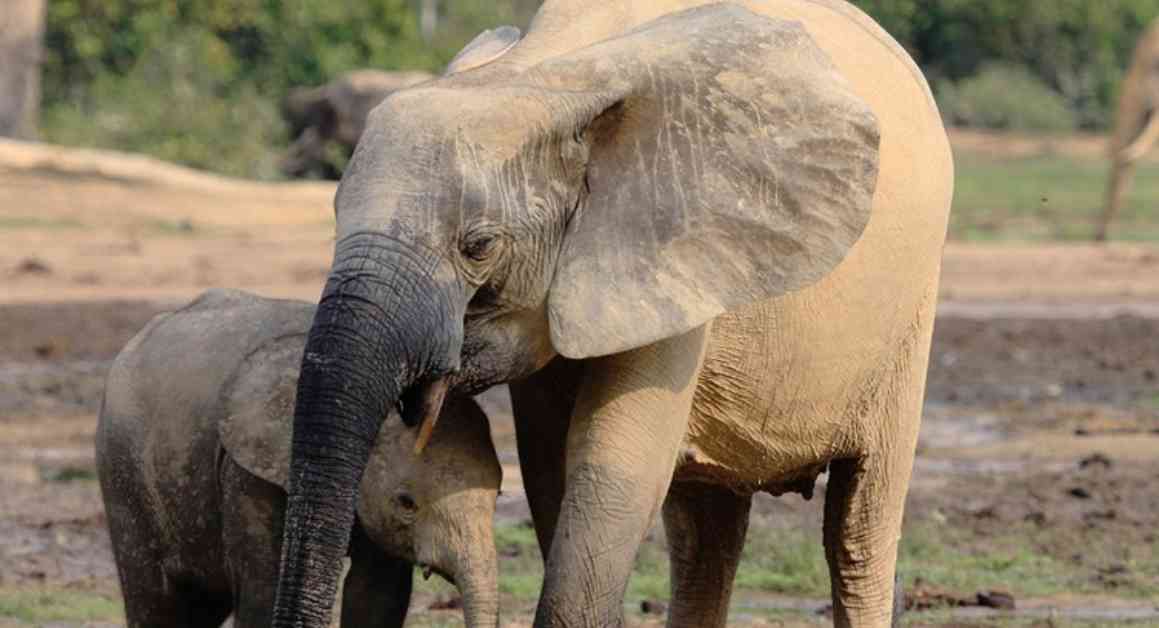Revolutionizing Conservation Efforts Through AI Visual Inspection Technology
In a groundbreaking collaboration between IBM and the World Wide Fund For Nature – Germany (WWF), a new solution is being developed to support the monitoring of keystone species, starting with the critically endangered African forest elephant. This initiative aims to leverage AI-powered visual inspection technology to enhance elephant tracking, enabling the accurate identification of individual elephants from camera trap photos. By combining IBM’s expertise in sustainability and technology with WWF’s extensive experience in wildlife conservation, this innovative solution holds the potential to revolutionize conservation efforts for keystone species.
IBM and WWF’s Vision for Conservation
The partnership between IBM and WWF signifies a shared commitment to leveraging technology for environmental conservation. IBM Consulting collaborated closely with WWF to explore opportunities for innovation, aligning conservation initiatives with sustainability and technology expertise. IBM’s own software, IBM Maximo Visual Inspection (MVI), will be instrumental in this collaboration. The AI-powered visual inspection and modeling capabilities of MVI will be utilized to analyze images from camera traps and film, enabling the accurate identification of individual African forest elephants. This advanced technology will provide conservationists with vital data to enhance their monitoring and protection efforts.
Oday Abbosh, Global Sustainability Services Leader at IBM Consulting, emphasizes the company’s dedication to making a positive impact on the world through technology and sustainability. The collaboration with WWF represents a significant step forward in leveraging technology to create a more sustainable future. By harnessing the power of AI for conservation, IBM and WWF aim to drive meaningful change in the protection of keystone species like the African forest elephant.
Enhancing Conservation Efforts Through AI-Powered Monitoring
Counting African forest elephants has historically been a challenging and costly endeavor. The logistics involved in traditional monitoring methods are complex, and the resulting population estimates may lack precision. However, with the introduction of AI-powered visual inspection technology, the process of identifying individual elephants from camera trap images is poised to become more efficient and accurate. Thomas Breuer, African Forest Elephant Coordinator at WWF Germany, highlights the potential of AI in revolutionizing elephant monitoring efforts. By utilizing AI to track individual elephants in both space and time, conservationists can obtain more robust population estimates and implement performance-based conservation strategies such as wildlife credits.
The collaboration between IBM and WWF also aims to leverage IBM Environmental Intelligence to detect above-ground biomass and vegetation levels in areas where African forest elephants are present. This innovative approach will enable more accurate predictions of the elephants’ future locations, facilitating better quantification of the ecosystem services they provide. By integrating advanced technology with conservation strategies, IBM and WWF are paving the way for more effective and data-driven conservation initiatives.
Kendra Dekeyrel, VP of ESG and Asset Management at IBM, highlights the pivotal role of technology in streamlining the process of identifying and monitoring individual elephants. The use of IBM software, combined with consulting services and WWF’s expertise, has the potential to accelerate sustainability efforts and create new pathways for conservation. This collaborative effort underscores the importance of leveraging technology to address complex environmental challenges and drive positive change.
Empowering Conservationists Through Technology and Collaboration
The partnership between IBM and WWF represents a powerful synergy between technology and conservation expertise. By combining IBM’s innovative solutions with WWF’s deep knowledge of wildlife conservation, the collaboration aims to empower conservationists with cutting-edge tools for monitoring keystone species. The utilization of AI-powered visual inspection technology not only enhances elephant tracking capabilities but also opens up new possibilities for data-driven conservation strategies.
The integration of AI into conservation monitoring represents a significant advancement in the field of wildlife conservation. With the ability to accurately identify individual elephants from camera trap images, conservationists can gain valuable insights into population dynamics, movement patterns, and habitat preferences. This data-driven approach enables more targeted conservation efforts and facilitates the protection of critical wildlife corridors essential for the survival of keystone species like the African forest elephant.
As technology continues to evolve, the potential for AI to revolutionize conservation efforts is immense. By harnessing the power of AI-powered visual inspection technology, IBM and WWF are at the forefront of driving innovation in environmental conservation. The collaborative efforts of these two organizations exemplify the transformative impact that technology can have on wildlife protection and sustainability.
In conclusion, the collaboration between IBM and WWF-Germany represents a groundbreaking initiative to leverage AI visual inspection technology for monitoring keystone species like the African forest elephant. By combining expertise in sustainability, technology, and wildlife conservation, IBM and WWF are spearheading a new era of data-driven conservation efforts. This innovative approach holds the promise of revolutionizing wildlife monitoring, enhancing conservation strategies, and ultimately contributing to a more sustainable future for our planet.






















